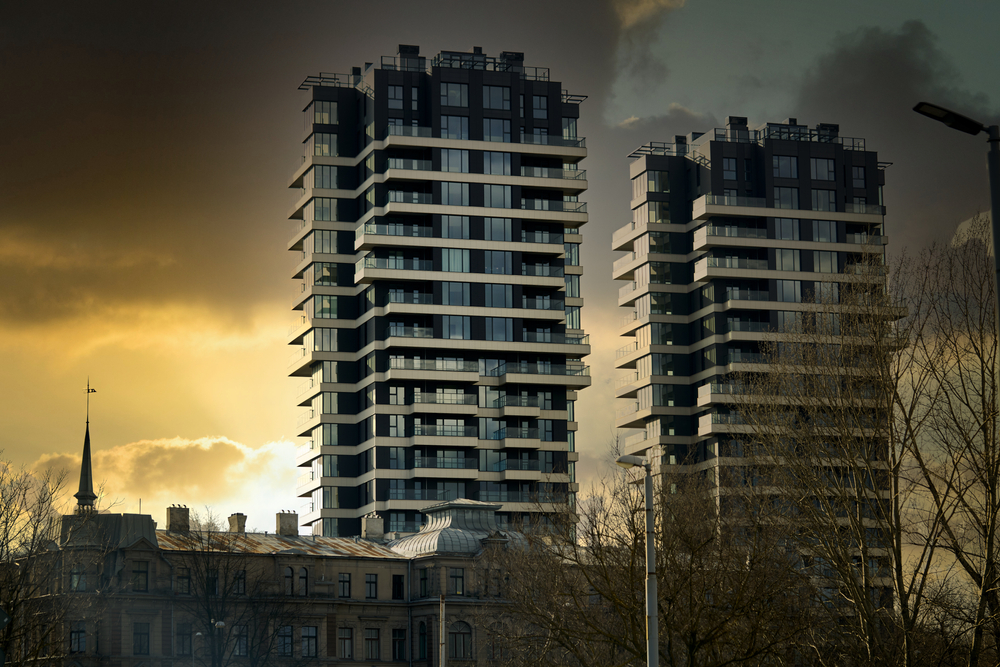Structures have been around since the beginning of mankind when hunters and gathers began to settle down in tents and similar shelter-like structures.
As time went on, other structures were formed to assist with daily activities like bridges to create easier passage and aqueducts to supply water at a quicker rate.
By the time the Roman Empire came around, there were a plethora of structures created by aspiring engineers that would ultimately be the steppingstone for future civilizations.
While the purpose of these structures remains more or less the same to this day, the complexity of the build has changed over time to create the impressive pieces of construction we see today.
Check out this list of the seven types of structures that are used to positively impact our world and learn about how they have changed with the times.
Table of Contents
1. Buildings

One of the very first structures to be introduced to mankind, buildings have been around for thousands of years, and it is considered one of the most important types of structures in the world.
The main use of this type of structure is to create a shelter where people have a safe space to lay their heads but as time has gone on, it has also become the structure used to carry out daily activities like work and entertainment.
This type of structure has seen enormous evolution from it resembling more of a tent during the Ice Age to what you see today.
However, there are still some places like Mongolia that have maintained more traditional variations of this structure like yurts, black tents, and mud-brick huts.
With that in mind, it is important to note that there are many different types of buildings, but they all fall under the same type of structure.
Buildings are useful for a number of reasons. They provide protection from unfavorable weather conditions such as rain, snow, wind, and strong heat waves.
Thanks to their enclosed space they can also maintain ideal temperatures in comparison to the outdoors while also decreasing other nuisances like humidity.
Plus, they offer a safe space for people to store their valuables and go about their business with a sense of privacy.
2. Aqueducts

Another important structure that doesn’t get nearly enough recognition is the aqueduct and it has also seen its fair share of evolution throughout the years.
You can argue that the aqueduct is equally, if not as important, as the structure of buildings because it provides people with the essentials needed to survive.
An aqueduct is used in areas where there is not a nearby water source by carrying water from a far-off location and making it easily accessible.
At first glance, an aqueduct can be mistaken for a bridge as it has a similar appearance, but this channel of arches is actually designed to carry water rather than people.
You’ll notice that oftentimes this type of structure is built using masonry or brick to ensure the best possible quality.
Although the first real example of an aqueduct wasn’t introduced until the beginning of the Roman Empire, similar systems have been in place for much longer to maintain irrigation systems and provide local people with a water source to drink and bathe in.
As time has gone on, this type of structure has become more and more advanced and some of the greatest structures are now labeled as historic sites such as the Carioca aqueduct in Brazil.
While this structure is beneficial in many ways, one con of its system is that it can often cause a drought in the areas it is pulling the water from.
3. Bridges

See also: The 30 Most Famous Bridges in the United States
Next up on the list of important structures is bridges for their ability to transport people and items across locations that would normally be considered impassable.
There are so many different types of bridges, and their build depends on a variety of factors like how the bridge will be used and the location in which the bridge will be built.
But one aspect that remains the same is its ability to suspend over obstacles without interfering with them.
Records show that bridges have been in use since the Neolithic age and while they were made of simple materials, they stand as a steppingstone in the evolution of the structure.
Speaking of steppingstones, some of the very first bridges were just that. Referred to as steppingstones, these bridges were made simply of timber logs that would help people travel over marshlands.
It wasn’t until the late 1700s that bridges saw a real breakthrough with the creation of the first iron bridge in England.
Today, there are more than ten kinds of bridges ranging from suspension to beam and everything in between. Some of the most popular bridges to visit include the Golden Gate Bridge, Sydney Harbor Bridge, and the Viaduc de Millau.
4. Canals

Although canals don’t appear to be as important to everyday life as bridges and buildings, it is an important tool for water-based travel and overall water supply.
The concept of the canal dates back to around 4000 BC when similar structures were built in modern-day Iraq to fuel irrigation systems.
There are various ways that canals can be built and their evolution over the years is a perfect example of that. But regardless of the process taken to create the canals, the use for them always revolves around a few key features.
Canals allow for a smoother passage through a channel of water that would otherwise be prone to rapids. In some areas, canals also provide a place for water to flow so that it does not flood the surrounding land.
They can also be used in combination with dams to ensure that a body of water is suitable for recreational use.
And most commonly, canals are used to create easy access for boaters traveling from one body of water to another.
The canal is able to do this by using locks that provide a controlled space for water to rise and fall for an easy transition in water depth.
5. Dams

Another water-based structure that plays an important role in the ease of everyday life is a dam, and most people don’t even realize the extent of its purpose.
Dams are the creation of wall-like barriers that stop the flow of water and result in the creation of large reservoirs.
Aside from the many recreational benefits that come with the developed reservoir, there are many other purposes for its build. The creation of dams also acts as a way to store rainwater that can be later used as drinking water.
Some of this rainwater even gets used to create Hydroelectric power that ultimately generates electricity. Along those same lines, the redirect of rainwater to the reservoir helps to avoid floods caused by runoff.
Plus, it provides communities with a backup supply of water if there were to ever be any serious issues like a drought.
There are many different kinds of dams but almost all of them are made up of some kind of strong material like concrete or natural rock. One of the most common types of dams is the Arch dam.
Arch dams are often used in narrow valleys where there is a strong flow of water but not much space to build an extensive structure.
One example of an arch dam is the iconic Hoover Dam located along the Colorado River on the border of Arizona and Nevada.
6. Tunnels

Like bridges, tunnels serve as a way to provide easy transportation in a situation where an area would normally be near to impossible to pass.
While tunnels act very similarly to bridges, their actual build is the complete opposite. Instead of suspending a structure high above the obstacle, tunnels are created to go right through it.
Most of the time, tunnels are used to pass through mountainsides or under cities to create a quicker form of transportation.
With that being said, they are carved underground and are enclosed on all sides except for their mouths.
Since there are steps that need to be taken before the actual tunnel can be built because of its placement, it should come as no surprise that there are a variety of methods to go about the process.
One of the first methods ever used for tunneling is called Drill and Blast and while it is the cheapest method, it is also the slowest.
Since then, other methods have been introduced such as roadheaders, open-cut, pipe-jacking, auger-boring, and many more.
Regardless of the method used, tunneling can be an extremely dangerous task since it involves the interaction with unstable materials. Some common threats include rock falls, floods, explosives, and toxic gas.
7. Coastal Defenses

The ocean covers nearly seventy percent of the earth’s surface, so it only makes sense that there are structures in place to provide protection from certain situations like flooding.
There are a handful of different coastal defenses used to protect the surrounding area from crashing waves and vice versa.
Over the years, new coastal defenses have been established in an effort to rise above the downfalls of prior builds.
After a series of trial and error, it was discovered that certain types of coastal defenses are more beneficial in specific areas. The five kinds of coastal defenses are known as sea walls, groynes, revetments, breakwaters, and gabions.
Groynes are a type of coastal defense that stretches out from the beach and into the ocean to create a barrier.
These barriers are normally made of cement, and while they are great for slowing down drift, they are also known to create a “starvation of sediment.”
Sea Walls are probably the most common type of coastal defense, and they are used as a way to calm strong waves in order to limit their effects of land erosion.
A modest alternative to sea walls is a revetment, which offers a more affordable way to minimize erosion. Breakwaters are used in replacement of sea walls in areas with large bodies of water that see frequent boat traffic.
This coastal defense offers a way for large ships to make their way out on the water without the swell of strong waves. The most interesting coastal defense are gabions because they are made up simply of rocks and steel mesh.

















